
Welch Allyn®
ELI® 150c/250c
12-LEAD RESTING ELECTROCARDIOGRAPH
SERVICE MANUAL
Manufactured by Welch Allyn, Inc., Skaneateles Falls, NY U.S.A.
CAUTION: Federal law restricts this device to sale by or on the order of a physician.

©2019 Welch Allyn This document contains confidential information that belongs to Welch Allyn, Inc. No part of this
document may be transmitted, reproduced, used, or disclosed outside of the receiving organization without the express
written consent of Welch Allyn, Inc. Welch Allyn is a registered trademark of Welch Allyn, Inc. E-Scribe, ELI, and
VERITAS are trademarks of Welch Allyn, Inc. Cisco® is the registered trademark of Cisco Systems, Inc. DICOM® is
the registered trademark of the National Electrical Manufacturers Association for its standards publications relating
to digital communications of medical information.
For patent information, please visit www.welchallyn.com/patents
For information about any Welch Allyn product, visit: https://www.welchallyn.com/en/about-us/locations.html
Customer Service and Technical Support: https://www.welchallyn.com/en/other/contact-us.html 1.888.667.8272,
mor_tech.supp[email protected]
9516-177-50-ENG Rev T (also refer to TDR pages when making revision changes)
Revision Date: 2023-01
(150c) 901129 ELECTROCARDIOGRAPH
(250c) 901131 ELECTROCARDIOGRAPH
EU IMPORTER
Welch Allyn, Inc.
4341 State Street Road
Skaneateles Falls, NY 13153 USA
www.welchallyn.com
Welch Allyn Limited
Navan Business Park, Dublin Road,
Navan, Co. Meath C15 AW22
Ireland

TABLE OF CONTENTS
NOTICES ........................................................................................................................................................................... 1
MANUFACTURER’S RESPONSIBILITY .............................................................................................................................................. 1
RESPONSIBILITY OF THE CUSTOMER .............................................................................................................................................. 1
EQUIPMENT IDENTIFICATION ....................................................................................................................................................... 1
COPYRIGHT AND TRADEMARK NOTICES ......................................................................................................................................... 1
OTHER IMPORTANT INFORMATION .............................................................................................................................................. 1
NOTICE TO EU USERS AND/OR PATIENTS ...................................................................................................................................... 1
DISPOSAL ................................................................................................................................................................................ 1
WARRANTY INFORMATION .............................................................................................................................................. 2
YOUR WELCH ALLYN WARRANTY................................................................................................................................................. 2
USER SAFETY INFORMATION ............................................................................................................................................ 3
WARNING(S) ........................................................................................................................................................................ 3
CAUTION(S) ............................................................................................................................................................................. 6
NOTE(S) ................................................................................................................................................................................. 7
WIRELESS DATA TRANSMISSION .................................................................................................................................................. 8
WLAN OPTION ....................................................................................................................................................................... 8
EQUIPMENT SYMBOLS AND MARKINGS ......................................................................................................................... 11
SYMBOL DELINEATION ............................................................................................................................................................. 11
ELECTROMAGNETIC COMPATIBILITY (EMC) .................................................................................................................... 13
GUIDANCE AND MANUFACTURER’S DECLARATION: ELECTROMAGNETIC EMISSIONS ............................................................................. 14
GUIDANCE AND MANUFACTURER’S DECLARATION: ELECTROMAGNETIC IMMUNITY ............................................................................. 14
GUIDANCE AND MANUFACTURER’S DECLARATION: ELECTROMAGNETIC IMMUNITY ............................................................................. 15
RECOMMENDED SEPARATION DISTANCES BETWEEN PORTABLE AND MOBILE RF COMMUNICATIONS EQUIPMENT AND THE EQUIPMENT ....... 16
REGULATORY RADIO COMPLIANCE ............................................................................................................................................. 17
Federal Communications Commission (FCC) ................................................................................................................. 17
Industry Canada (IC) Emissions ..................................................................................................................................... 18
Declaración de conformidad Mexico ............................................................................................................................. 18
European Union ............................................................................................................................................................. 19
RADIO COMPLIANCE TABLE ...................................................................................................................................................... 20
MAINTENANCE & CLEANING .......................................................................................................................................... 22
RECOMMENDED TOOLS AND SUPPLIES ........................................................................................................................................ 22
PREVENTIVE MAINTENANCE ..................................................................................................................................................... 23
DEVICE CLEANING & DISINFECTING ............................................................................................................................................ 27
ELI 150/250C PREVENTIVE MAINTENANCE REPORT ..................................................................................................................... 28
DEVICE CONFIGURATION ............................................................................................................................................... 29
SETTING TECHNICIAN PASSWORD .............................................................................................................................................. 29
CONFIGURATION MENUS ......................................................................................................................................................... 29
SUMMARY OF CONFIGURATION MENUS ...................................................................................................................................... 30
CONFIGURATION SETTINGS ....................................................................................................................................................... 33
UNIT DISASSEMBLY ........................................................................................................................................................ 42
REMOVAL OF THE UNIT FROM CART ........................................................................................................................................... 43
COVER ASSEMBLY REMOVAL ................................................................................................................................................... 434
WRITER REMOVAL ................................................................................................................................................................ 455
KEYBOARD REMOVAL ............................................................................................................................................................ 522

INSTALLATION OF THE RIBBON CABLE TO THE KEYPAD ASSEMBLY ................................................................................................... 555
I/O BOARD REMOVAL ........................................................................................................................................................... 566
BATTERY REPLACEMENT ......................................................................................................................................................... 599
ITEM DESCRIPTION LISTING (150C) ................................................................................................................................ 61
ITEM DESCRIPTION LISTING (250C) ................................................................................................................................ 64
ITEM IDENTIFICATION TABLE (BOTH MODELS) ............................................................................................................... 67
DEVICE SPECIFICATIONS ............................................................................................................................................... 855
ELI 150C SPECIFICATIONS ...................................................................................................................................................... 855
ELI 250C SPECIFICATIONS ...................................................................................................................................................... 866
TROUBLESHOOTING ..................................................................................................................................................... 877
SYSTEM TROUBLESHOOTING CHART ......................................................................................................................................... 877
ECG TROUBLESHOOTING CHART ............................................................................................................................................. 877
TRANSMISSION TROUBLESHOOTING CHART ............................................................................................................................... 877
TRANSMISSION TROUBLESHOOTING CHART (CONTINUED) ......................................................................................................... 888
PAPER CUE FAULT ................................................................................................................................................................. 888
TEST MENU ......................................................................................................................................................................... 888
CONFORMANCE TESTING ............................................................................................................................................... 90
CONFORMANCE TESTING ......................................................................................................................................................... 90
POWER TESTING ..................................................................................................................................................................... 90
FUNCTIONAL TESTING .............................................................................................................................................................. 91
DEVICE CLEANING ................................................................................................................................................................. 933
SAFETY TESTING ................................................................................................................................................................... 933
ELI 150C/250C TEST DATA RECORD ...................................................................................................................................... 944
ELI 150C/250C COMMUNICATION OPTIONS ................................................................................................................ 955
COMMUNICATION OPTIONS ................................................................................................................................................... 955
COMMUNICATION ERROR MESSAGES ....................................................................................................................................... 955
COMMUNICATION OPTIONS (SOFTWARE ONLY) .......................................................................................................................... 966
COMMUNICATION OPTIONS (HARDWARE + SOFTWARE) .............................................................................................................. 966
Modem ........................................................................................................................................................................ 966

1
NOTICES
Manufacturer’s Responsibility
Welch Allyn, Inc. is responsible for the effects on safety and performance only if:
•
Assembly operations, extensions, readjustments, modifications, or repairs are carried out only by persons
authorized by Welch Allyn, Inc.
•
The device is used in accordance with the instructions for use.
Responsibility of the Customer
The user of this device is responsible for ensuring the implementation of a satisfactory maintenance schedule.
Failure to do so may cause undue failure and possible health hazards.
Equipment Identification
Welch Allyn, Inc. equipment is identified by a serial and reference number on the back of the device. Care should
be taken so that these numbers are not defaced.
Copyright and Trademark Notices
This document contains information that is protected by copyright. All rights are reserved. No part of this
document may be photocopied, reproduced, or translated to another language without prior written consent of
Welch Allyn, Inc.
Other Important Information
The information in this document is subject to change without notice.
Welch Allyn, Inc. makes no warranty of any kind with regard to this material including, but not limited to,
implied warranties of merchantability and fitness for a particular purpose. Welch Allyn, Inc. assumes no
responsibility for any errors or omissions that may appear in this document. Welch Allyn, Inc. makes no
commitment to update or to keep current the information contained in this document.
Notice to EU Users and/or Patients
Any serious incident that has occurred in relation to the device, should be reported to the manufacturer and the
competent authority of the Member State in which the user and/or patient is established.
Disposal
This product and its accessories must be disposed of according to the local laws and regulations. Do not dispose of this
product as unsorted municipal waste. For more specific disposal information see www.welchallyn.com/weee.

2
WARRANTY INFORMATION
Your Welch Allyn Warranty
WELCH ALLYN, INC. (hereafter referred to as “Welch Allyn”) warrants that components within Welch Allyn
products (hereafter referred to as “Product/s”) will be free from defects in workmanship and materials for the
number of years specified on documentation accompanying the product, or previously agreed to by the purchaser
and Welch Allyn, or if not otherwise noted, for a period of twenty-four (24) months from the date of shipment.
Consumable, disposable or single use products such as, but not limited to, PAPER or ELECTRODES are warranted
to be free from defects in workmanship and materials for a period of 90 days from the date of shipment or the date
of first use, whichever is sooner.
Reusable product such as, but not limited to, BATTERIES, BLOOD PRESSURE CUFFS, BLOOD PRESSURE
HOSES, TRANSDUCER CABLES, Y-CABLES, PATIENT CABLES, LEAD WIRES, MAGNETIC STORAGE
MEDIUMS, CARRY CASES or MOUNTS, are warranted to be free from defects in workmanship and materials for
a period of 90 days. This warranty does not apply to damage to the Product/s caused by any or all of the following
circumstances or conditions:
a)
Freight damage;
b)
Parts and/or accessories of the Product/s not obtained from or approved by Welch Allyn;
c)
Misapplication, misuse, abuse, and/or failure to follow the Product/s instruction sheets
and/or information guides;
d)
Accident; a disaster affecting the Product/s;
e)
Alterations and/or modifications to the Product/s not authorized by Welch Allyn;
f)
Other events outside of Welch Allyn’s reasonable control or not arising under normal operating conditions.
THE REMEDY UNDER THIS WARRANTY IS LIMITED TO THE REPAIR OR REPLACEMENT WITHOUT
CHARGE FOR LABOR OR MATERIALS, OR ANY PRODUCT/S FOUND UPON EXAMINATION BY
WELCH ALLYN TO HAVE BEEN DEFECTIVE. This remedy shall be conditioned upon receipt of notice by Welch
Allyn of any alleged defects promptly after discovery thereof within the warranty period. Welch Allyn’s obligations
under the foregoing warranty will further be conditioned upon the assumption by the purchaser of the Product/s (i) of
all carrier charges with respect to any Product/s returned to Welch Allyn’s principal place or any other place as
specifically designated by Welch Allyn or an authorized distributor or representative of Welch Allyn, and (ii) all risk
of loss in transit. It is expressly agreed that the liability of Welch Allyn is limited and that Welch Allyn does not
function as an insurer. A purchaser of a Product/s, by its acceptance and purchase thereof, acknowledges and agrees
that Welch Allyn is not liable for loss, harm, or damage due directly or indirectly to an occurrence or consequence
therefrom relating to the Product/s. If Welch Allyn should be found liable to anyone under any theory (except the
expressed warranty set forth herein) for loss, harm, or damage, the liability of Welch Allyn shall be limited to the
lesser of the actual loss, harm, or damage, or the original purchase price of the Product/s when sold.
EXCEPT AS SET FORTH HEREIN WITH RESPECT TO REIMBURSEMENT OF LABOR CHARGES, A
PURCHASER’S SOLE EXCLUSIVE REMEDY AGAINST WELCH ALLYN FOR CLAIMS RELATING TO THE
PRODUCT/S FOR ANY AND ALL LOSSES AND DAMAGES RESULTING FROM ANY CAUSE SHALL BE
THE REPAIR OR REPLACEMENT OF DEFECTIVE PRODUCT/S TO THE EXTENT THAT THE DEFECT IS
NOTICED AND WELCH ALLYN IS NOTIFIED WITHIN THE WARRANTY PERIOD. IN NO EVENT,
INCLUDING THE CLAIM FOR NEGLIGENCE, SHALL WELCH ALLYN BE LIABLE FOR INCIDENTAL,
SPECIAL, OR CONSEQUENTIAL DAMAGES, OR FOR ANY OTHER LOSS, DAMAGE, OR EXPENSE OF
ANY KIND, INCLUDING LOSS OF PROFITS, WHETHER UNDER TORT, NEGLIGENCE OR STRICT
LIABILITY THEORIES OF LAW, OR OTHERWISE. THIS WARRANTY IS EXPRESSLY IN LIEU OF ANY
OTHER WARRANTIES, EXPRESS OR IMPLIED, INCLUDING, BUT NOT LIMITED TO THE IMPLIED
WARRANTY OF MERCHANTABILITY AND THE WARRANTY OF FITNESS FOR A PARTICULAR
PURPOSE.

3
USER SAFETY INFORMATION
WARNING:
Means there is the possibility of personal injury to you or others.
Caution:
Means there is the possibility of damage to the device.
Note:
Provides information to further assist in the use of the device.
WARNING(S)
•
This manual gives important information about the use and safety of this device. Deviating from operating
procedures, misuse or misapplication of the device, or ignoring specifications and recommendations could
result in increased risk of harm to users, patients and bystanders, or damage to the device.
•
Device captures and presents data reflecting a patient’s physiological condition that when reviewed by a trained
physician or clinician can be useful in determining a diagnosis; however, the data should not be used as a sole
means for determining a patient’s diagnosis.
•
Users are expected to be licensed clinical professionals knowledgeable about medical procedures and patient
care, and adequately trained in the use of this device. Before attempting to use this device for clinical
applications, the operator must read and understand the contents of the user manual and other accompanying
documents. Inadequate knowledge or training could result in increased risk of harm to users, patients and
bystanders, or damage to the device. Contact Welch Allyn service for additional training options.
•
To ensure that electrical safety is maintained during operation from AC (~) power, the device must be plugged
into a hospital-grade outlet.
•
Only use parts and accessories supplied with the device and available through Welch Allyn, Inc.
•
Patient cables intended for use with the device include series resistance (9 Kohm minimum) in each lead for
defibrillation protection. Patient cables should be checked for cracks or breakage prior to use.
•
Conductive parts of the patient cable, electrodes, and associated connections of type CF applied parts, including
the neutral conductor of the patient cable and electrodes, should not come into contact with other conductive
parts including earth ground.
•
ECG electrodes could cause skin irritation; patients should be examined for signs of irritation or inflammation.
•
To avoid the possibility of serious injury or death during patient defibrillation, do not come into contact with
device or patient cables. Additionally, proper placement of defibrillator paddles in relation to the electrodes is
required to minimize harm to the patient.

4
USER SAFETY INFORMATION
•
This device was designed to use the electrodes specified in the user manual. Proper clinical procedure must be
employed to prep the electrode sites and to monitor the patient for excessive skin irritation, inflammation, or
other adverse reactions. Electrodes are intended for short-term use and should be removed from the patient
promptly following testing.
•
To avoid potential for spread of disease or infection, single-use disposable components (e.g., electrodes) must
not be reused. To maintain safety and effectiveness, electrodes must not be used beyond their expiration date.
•
A possible explosion hazard exists. Do not use the device in the presence of a flammable anesthetic mixture.
•
Where the integrity of external protective earth conductor arrangement is in doubt, the device shall be operated
from its internal electrical power source.
•
To improve immunity to potential interfering electromagnetic signals, shielded cabling is recommended when
connecting the device to a network.
•
Medical devices have been designed to have a higher degree of protection against electric shock than, for
instance, information technology equipment because patients often are connected to multiple devices and
also may be more prone to the adverse effect of electric currents than healthy persons. All equipment that is
connected to the patient, can be touched by the patient, or can be touched by another person while that
person touches the patient at the same time, should have the same level of protection against electric shock
as medical equipment. The ELI 150c and ELI 250c are medical devices that have been designed to be
connected to other devices for the purpose of receiving and transmitting data. Certain measures must be
taken to prevent the risk of excessive electric current flow through the operator or patient when connected:
•
All electrical equipment that is not medical electrical equipment must be placed outside of the “patient
environment,” defined by applicable safety standards to be at least 1.5 meters (5 feet) from the patient.
Alternatively, non-medical equipment may be provided with additional protection such as an additional
protective earth connection.
•
All medical electrical equipment that has a physical connection to the ELI 150c/ELI 250c or the patient
or is in the patient environment must comply with applicable safety standards for medical electrical
devices.
•
All electrical equipment that is not medical electrical equipment and has a physical connection to the
ELI 150c/ELI 250c must comply with applicable safety standards, such as IEC 60950 for information
technology equipment. This includes information network equipment connected through the LAN
connector.
•
Conductive (metal) parts that can be touched by the operator in normal use and that are connected to non-
medical equipment should not be brought into the patient environment. Examples are connectors for
shielded Ethernet or USB cables.
•
If multiple devices are connected to each other or to the patient, device chassis and patient leakage currents
may be increased, and should be measured for compliance with applicable standards for medical electrical
systems.
•
Avoid the use of portable multiple socket outlets. If used and not compliant with medical electrical
device standards, an additional protective earth connection is required.

5
USER SAFETY INFORMATION
•
After defibrillation pulse, electrocardiograph has a maximum recovery time of 5 seconds.
•
To prevent electric shock due to unequal ground potentials that may exist between points of a distributed
network system or fault conditions in external network connected equipment, network cable shielding (where
used) must be connected to protective earth ground appropriate to the area where the device is used.
•
The device has not been designed for use with high-frequency (HF) surgical equipment and does not provide a
protective means against hazards to the patient.
•
When the 40 Hz filter is used, the frequency response requirement for diagnostic ECG equipment cannot be
met. The 40 Hz filter significantly reduces high-frequency components of the ECG and pacemaker spike
amplitudes, and is recommended only if high-frequency noise cannot be reduced by proper procedures.
•
The quality of the signal produced by the device may be adversely affected by the use of other medical
equipment, including but not limited to defibrillators and ultrasound machines.
•
For proper operation and the safety of users or patients and bystanders, equipment and accessories must be
connected only as described in this manual. Do not connect a telephone line cable to the LAN connector.
•
Some Welch Allyn electrocardiographs can be equipped with a GPRS (cellular modem) or wireless LAN
(WLAN) module for transmitting ECG records. Device labeling and the presence of an antenna port will
indicate if your device is equipped with such a module. If so equipped, the following notices apply:
•
The GPRS module operates in allocated frequency bands depending on the model. Identification of
the installed GPRS module can be found on a label on the bottom of the device.
•
MultiTech Systems, Inc. Model MTSMC-H5: 850/900/1700(AWS)/1900/2100 MHz
•
The WLAN identification can be found on a label on the bottom of the device.
•
B&B Electronics Model WLNN-AN-MR551: 2400 MHz
(model subject to change without notice)

6
USER SAFETY INFORMATION
•
Use of the GPRS or WLAN module may interfere with other equipment operating in the vicinity. Check with
local authorities or spectrum management officials in your facility to determine if restrictions apply to the use
of this feature in your area.
•
Do not transmit via the GPRS or WLAN module with a missing or damaged antenna. Replace a damaged
antenna immediately.
•
Use only the antenna supplied for use with this device. Unauthorized antennas, modifications, or attachments
could damage the GSM module and may contravene local RF emission regulations or invalidate type approval.
•
To ensure compliance with current regulations limiting both maximum RF output power and human exposure
to radio frequency radiation, a separation distance of at least 20 cm must be maintained between the device's
antenna and the head and body of the user and any nearby persons at all times. To help prevent degradation of
RF signal and to avoid excess RF energy absorption, do not touch the antenna during data transmission.
•
The GPRS and WLAN modules comply with applicable RF safety standards including standards and
recommendations for the protection of public exposure to RF electromagnetic energy that have been established
by governmental bodies and other qualified organizations, such as the following:
•
Federal Communications Commission (FCC)
•
Directives of the European Community
•
Directorate General V in Matters of Radio Frequency Electromagnetic Energy
•
Proper functioning backup items such as spare lead wires, front-end device, and other equipment are
recommended on hand to prevent delayed treatment due to an inoperable device.
Caution(s)
•
To prevent possible damage to the keyboard, do not use sharp or hard objects to depress keys, only
use fingertips.
•
Do not attempt to clean the device or patient cables by submersing into a liquid, autoclaving, or steam cleaning
as this may damage equipment or reduce its usable life. Wipe the exterior surfaces with a warm water and mild
detergent solution and then dry with a clean cloth. Use of unspecified cleaning/disinfecting agents, failure to
follow recommended procedures, or contact with unspecified materials could result in increased risk of harm to
users, patients and bystanders, or damage to the device.
•
No user-serviceable parts inside. Screw removal by qualified service personnel only. Damaged or suspected
inoperative equipment must be immediately removed from use and must be checked/repaired by qualified
service personnel prior to continued use.
•
The rechargeable internal battery is a sealed lead-acid type and it is totally maintenance free. If the battery
appears to become defective, refer to Welch Allyn Service Department.
•
Do not pull or stretch patient cables as this could result in mechanical and/or electrical failures. Patient cables
should be stored after forming them into a loose loop.
•
No calibration or special equipments are needed for the proper operation or maintenance of the device.
●
When necessary, dispose of the device, its components and accessories (e.g., batteries, cables, electrodes),
and/or packing materials in accordance with local regulations.
•
Use only No. 26 AWG or larger telecommunication line cord.

7
USER SAFETY INFORMATION
Note(s)
•
Patient movements may generate excessive noise that may affect the quality of the ECG traces and the proper
analysis performed by the device.
•
Proper patient preparation is important to proper application of ECG electrodes and operation of the device.
•
The algorithm detecting electrode misplacements is based on normal physiology and ECG lead order, and tries
to identify the most likely switch; however, it is advisable to check the other electrode positions in the same
group (limb or chest).
•
There is no known safety hazard if other equipment, such as pacemakers or other stimulators, is used
simultaneously with the device; however, disturbance to the signal may occur.
•
If electrode is not properly connected to the patient, or one or more of the patient cable lead wires is damaged,
display will indicate a lead fault for the lead(s) where the condition is present by presenting a square wave and if
the signal is being printed, the respective lead(s) will print out as a flat line.
•
As defined by IEC 60601-1 and IEC 60601-2-25, the device is classified as follows:
•
Class I equipment or internally powered.
•
Type CF defibrillation-proof applied parts.
•
Ordinary equipment.
•
Equipment not suitable for use in the presence of a flammable anesthetic mixture.
•
Continuous operation.
NOTE: From a safety perspective, per IEC 60601-1 and derivative standards/norms, this device is
declared to be “Class I” and uses a three-prong inlet to ensure an earth connection is made along with
mains. The ground terminal on the mains inlet is the only protective earth point in the device. Exposed
metal accessible during normal operation is double insulated from mains. Internal connections to earth
ground are functional earth.
•
This device is intended to be used in a hospital or doctor’s office setting, and should be used and stored
according to the environmental conditions specified below:
Operating temperature: +10° to +40°C (+50° to +104°F)
Operating humidity: 10% to 95% RH, non-condensing
Storage temperature: -40° to +70°C (-40° to +158°F)
Storage humidity: 10% to 95% RH, non-condensing
Atmospheric pressure: 500 hPa to 1060 hPa
•
WAM™ (wireless acquisition module) must be paired to electrocardiograph before operation.
•
Device must be configured at the factory for use with the WAM.
•
After operating the device using battery power, always reconnect the power cord. This ensures that the batteries
will be automatically recharged for the next time you use the device.

8
USER SAFETY INFORMATION
•
The device is UL classified:
WITH RESPECT TO ELECTRIC SHOCK, FIRE AND MECHANICAL
HAZARDS ONLY IN ACCORDANCE WITH UL60601-1, IEC60601-1,
CAN/CSA C22.2 No. 60601-1, IEC 60601-1-1, CAN/CSA C22.2 No.
60601-1-1-02, IEC60601-2-25 AND CAN/CSA C22.2 No. 601.2.25-94.
•
The device is a member of the ELI 1xx or ELI 2xx Series 2 electrocardiograph family.
Wireless Data Transmission
•
Some Welch Allyn electrocardiographs can be equipped with an optional wireless data transmission module
(WLAN or GSM/GPRS mobile). Both these technologies use radios to transmit data to a Welch Allyn
receiving application. Due to the nature of radio transmissions, it’s possible that, due to the characteristics of
the environment where the device is located, some other RF sources may interfere with the transmission
generated by the device. Welch Allyn has tested the coexistence of the device with other devices that can
interfere such as devices using WLAN, Bluetooth radio, and/or cell phones. Although the current technology
allows a very successful rate of transmission, it’s possible that in some rare occurrences, the system may not
perform at its best resulting in a “failed transmission.” When this occurs, patient data will not be erased from
the device nor stored in the receiving application, ensuring that partial or corrupted data are not made available
to the receiving station. If the failure mode persists the user should move to a position where the RF signals
may propagate better and allow successful transmissions.
WLAN Option
•
Wireless options transmit in the 2.4 GHz or 5ghz range. Other nearby wireless devices may cause interference.
If possible, move or turn off other devices to minimize potential interference.
•
The Wireless LAN module used is compliant with the IEEE 802.11 a, b, g and n standards.
•
Access Points used should respect IEEE 802.11 standards as well as local Radio Frequency regulations. The
device will scan the available channels and connect to the Access Point on the channel where the SSID that is
configured on the device is available.

9
USER SAFETY INFORMATION
•
The following table shows the radio channels allocated in different geographic areas in the world. For bands
802.11b and g, only channels 1, 6, 11 and 14 (Japan only) are non-overlapping; for band 802-11a, channels
shown represent non-overlapping channel numbers.
Band
Typical Power
Region
Frequency
Range (GHz)
No. of
channels
Channel numbers
802.11b
15 dBm / 32 mW
USA/Canada
2.401 - 2.473
11
1 – 11
Europe
2.401 - 2.483
13
1 – 13
Japan
2.401 - 2.495
14
1 – 14
802.11g
13 dBm / 18 mW
USA/Canada
2.401 - 2.473
11
1 – 11
Europe
2.401 - 2.483
13
1 – 13
Japan
2.401 - 2.483
13
1 – 13
802.11a
17 dBm / 50 mW
USA/Canada
5.15 - 5.35,
5.725 - 5.825
13
36,40,44,48,52,56,60,64,149,
153,157,161,165
Europe
5.15 - 5.35,
5.47 - 5.725
19
36,40,44,48,52,56,60,64,100,
104,108,112,116,120,124,
128,132,136,140
Japan
4.91 – 4.99,
5.15 - 5.35,
5.47 - 5.725
23
36,40,44,48,52,56,60,64,100,
104,108,112,116,120,124,
128,132,136,140,184188,
192,196
China
5.725 - 5.825
5
149,153,157,161,165

10
USER SAFETY INFORMATION
•
The following table lists the frequency allocated for each channel used by the WLAN option.
Channel
Center Frequency
Frequency Spread
1
2412 MHz
2399.5 MHz - 2424.5 MHz
2
2417 MHz
2404.5 MHz - 2429.5 MHz
3
2422 MHz
2409.5 MHz - 2434.5 MHz
4
2427 MHz
2414.5 MHz - 2439.5 MHz
5
2432 MHz
2419.5 MHz - 2444.5 MHz
6
2437 MHz
2424.5 MHz - 2449.5 MHz
7
2442 MHz
2429.5 MHz - 2454.5 MHz
8
2447 MHz
2434.5 MHz - 2459.5 MHz
9
2452 MHz
2439.5 MHz - 2464.5 MHz
10
2457 MHz
2444.5 MHz - 2469.5 MHz
11
2462 MHz
2449.5 MHz - 2474.5 MHz
12
2467 MHz
2454.5 MHz - 2479.5 MHz
13
2472 MHz
2459.5 MHz - 2484.5 MHz
14
2484 MHz
2471.5 MHz – 2496.5 MHz
•
In order to achieve the best transmission rate, it is necessary that the facility where the device is operated can
provide good area coverage. Please consult the IT personnel of the facility to verify the proper WLAN
availability in the area where the device will be used.
•
RF wave propagation may be blocked or reduced by the environment where the device is used. Most common
areas where this may occur are: shielded rooms, elevators, underground rooms. In all the above situations, it is
recommended to move the device to a proper location and verify with the IT personnel of the facility the areas
where the WLAN signals are available.

11
EQUIPMENT SYMBOLS AND MARKINGS
Symbol Delineation
CAUTION The caution statements in this manual identify conditions or practices
that could result in damage to the equipment or other property, or loss of data.
WARNING The warning statements in this manual identify conditions or
practices that could lead to illness, injury, or death. In addition, when used on a
patient applied part, this symbol indicates defibrillation protection is in the
cables. Warning symbols will appear with a grey background in a black and
white document.
Alternating current
Protective earth
Telephone line (modem)
Network (LAN)
Defibrillator-proof type CF applied part
USB port
Input
ON/OFF (power)
Stop (of action)
Shift key (to enter upper case text)
Enter key (accept data/return)

12
EQUIPMENT SYMBOLS AND MARKINGS
Initiate printing of 12-lead ECG
Initiate printing of continuous rhythm strip
Transmit, receive and time sync operation depending upon configuration
settings
Do not dispose as unsorted municipal waste. Requires separate handling
for waste disposal according to local requirements.
Antenna
Indicates compliance to applicable European Union directives
Follow instructions/directions for use (DFU) – mandatory action. A copy of
the DFU is available on this website. A printed copy of the DFU can be
ordered from Welch Allyn for delivery within 7 calendar days.
Medical Device
Model Identifier
Reorder Number
Non-ionizing electromagnetic radiation

13
ELECTROMAGNETIC COMPATIBILITY (EMC)
Electromagnetic compatibility with surrounding devices should be assessed when using the device.
An electronic device can either generate or receive electromagnetic interference. Testing for electromagnetic
compatibility (EMC) has been performed on the device according to the international standard for EMC for medical
devices (IEC 60601-1-2). This IEC standard has been adopted in Europe as the European Norm (EN 60601-1-2).
The device should not be used adjacent to, or stacked on top of other equipment. If the device must be used adjacent
to or stacked on top of other equipment, verify that the device operates in an acceptable manner in the configuration
in which it will be used.
Fixed, portable, and mobile radio frequency communications equipment can affect the performance of medical
equipment. See the appropriate table for recommended separation distances between the radio equipment and the
device.
The use of accessories, transducers, and cables other than those specified by Welch Allyn may result in
increased emissions or decreased immunity of the equipment.

14
ELECTROMAGNETIC COMPATIBILITY (EMC)
Guidance and Manufacturer’s Declaration: Electromagnetic Emissions
The equipment is intended for use in the electromagnetic environment specified in the table below. The customer or
the user of the equipment should ensure that it is used in such an environment.
Emissions Test
Compliance
Electromagnetic Environment: Guidance
RF Emissions CISPR 11
Group 1
The equipment uses RF energy only for its internal function.
Therefore, its RF emissions are very low and not likely to cause
any interference in nearby electronic equipment.
RF Emissions CISPR 11
Class A
The equipment is suitable for use in all establishments other
than domestic and those directly connected to the public low-
voltage power supply network that supplies buildings used for
domestic purposes.
Harmonic Emissions
IEC 61000-3-2
Complies
Voltage Fluctuations/
Flicker Emissions
IEC 61000-3-3
Complies
Guidance and Manufacturer’s Declaration: Electromagnetic Immunity
The equipment is intended for use in the electromagnetic environment specified in the table below. The customer or
the user of the equipment should ensure that it is used in such an environment.
Emissions Test
Compliance
Compliance Level
Electromagnetic Environment: Guidance
Electrostatic
discharge (ESD)
IEC 61000-4-2
+/- 6 kV contact
+/- 8 kV air
+/- 6 kV contact
+/- 8 kV air
Floors should be wood, concrete, or ceramic
tile. If floors are covered with synthetic
material, the relative humidity should be at
least 30%.
Electrical fast
transient/burst
IEC 61000-4-4
+/- 2 kV for
power supply lines
+/- 1 kV for
input/output lines
+/- 2 kV for
power supply lines
+/- 1 kV for
input/output lines
Mains power quality should be that of a typical
commercial or hospital environment.
Surge
IEC 61000-4-5
+/- 1 kV differential
mode
+/- 2 kV common
mode
+/- 1 kV differential
mode
+/- 2 kV common
mode
Mains power quality should be that of a typical
commercial or hospital environment.
Voltage dips,
short
interruptions,
and voltage
variations on
power supply
input lines
IEC 61000-4-11
<5% UT
(>95% dip in UT)
for 0.5 cycle
40% UT
(60% dip in UT)
for 5 cycles
<5% UT
(>95% dip in UT)
for 0.5 cycle
40% UT
(60% dip in UT)
for 5 cycles
Mains power quality should be that of a typical
commercial or hospital environment.
Power frequency
(50/60 Hz)
magnetic field
3 A/m
3 A/m
Power frequency magnetic fields should be at
levels characteristic of a typical location in a
typical commercial or hospital environment.
NOTE: UT is the AC Mains voltage prior to application of the test level.

15
ELECTROMAGNETIC COMPATIBILITY (EMC)
Guidance and Manufacturer’s Declaration: Electromagnetic Immunity
The equipment is intended for use in the electromagnetic environment specified in the table below. The customer or
the user of the equipment should ensure that it is used in such an environment.
Emissions Test
IEC 60601 Test
Level
Compliance
Level
Electromagnetic Environment: Guidance
Conducted RF
IEC 61000-4-6
3 Vrms
150 kHz to
80 MHz
3 Vrms
150 kHz to
80 MHz
Portable and mobile RF communications equipment
should be used no closer to any part of the equipment,
including cables, than the recommended separation
distance calculated from the equation applicable to the
frequency of the transmitter.
Recommended separation distance
d
=
3.5
P
3Vrms
d
=
3.5
P
80
M
H
z t
o
800
M
H
z
3V / m
d
=
7
P
800
M
H
z t
o
2.
5
G
H
z
3V / m
Where P is the maximum output power rating of the
transmitter in watts (W) according to the transmitter
manufacturer and d is the recommended separation
distance in meters (m).
Field strengths from fixed RF transmitters, as
determined by an electromagnetic site surveya, should
be less than the compliance level in each frequency
rangeb.
Interference may occur in the vicinity of equipment
marked with the following symbol:
Radiated RF
IEC 61000-4-3
3 V/m
80 MHz to
2.5 GHz
3 V/m
80 MHz to
2.5 GHz
a.
Field strengths from fixed transmitters, such as base stations for radio (cellular/cordless) telephones and land mobile radios,
amateur radios, AM and FM radio broadcast, and TV broadcast cannot be predicted theoretically with accuracy. To assess
the electromagnetic environment due to fixed RF transmitters, an electromagnetic site survey should be considered. If the
measured field strength in the location in which the equipment is used exceeds the applicable RF compliance level above, the
equipment should be observed to verify normal operation. If abnormal performance is observed, additional measures may be
necessary, such as reorienting or relocating the equipment.
b.
Over the frequency range 150 kHz to 80 MHz, field strengths should be less than [3] V/m.

ELECTROMAGNETIC COMPATIBILITY (EMC)
16
Recommended Separation Distances Between Portable and Mobile RF
Communications Equipment and the Equipment
The equipment is intended for use in the electromagnetic environment in which radiated RF disturbances are
controlled. The customer or the user of the equipment can help to prevent electromagnetic interference by
maintaining a minimum distance between portable and mobile RF communications equipment (transmitters) and the
equipment as recommended in the table below, according to the maximum output power of the communications
equipment.
Rated Maximum Output Power
of Transmitter W
Separation Distance According to Frequency of Transmitter (m)
150 KHz to 800 MHz
800 MHz to 2.5 GHz
d = 1.2 P
d = 2.3 P
0.01
0.1 m
0.2 m
0.1
0.4 m
0.7 m
1
1.2 m
2.3 m
10
4.0 m
7.0 m
100
12.0 m
23.0 m
For transmitters rated at a maximum output power not listed above, the recommended separation distance d in
meters (m) can be estimated using the equation applicable to the frequency of the transmitter, where P is the
maximum output power rating of the transmitter in watts (W) according to the transmitter manufacturer.
NOTE 1: At 800 MHz, the separation distance for the higher frequency range applies.
NOTE 2: These guidelines may not apply in all situations. Electromagnetic propagation is affected by the
absorption and reflection from structures, objects, and people.
Page is loading ...
Page is loading ...
Page is loading ...
Page is loading ...
Page is loading ...
Page is loading ...
Page is loading ...
Page is loading ...
Page is loading ...
Page is loading ...
Page is loading ...
Page is loading ...
Page is loading ...
Page is loading ...
Page is loading ...
Page is loading ...
Page is loading ...
Page is loading ...
Page is loading ...
Page is loading ...
Page is loading ...
Page is loading ...
Page is loading ...
Page is loading ...
Page is loading ...
Page is loading ...
Page is loading ...
Page is loading ...
Page is loading ...
Page is loading ...
Page is loading ...
Page is loading ...
Page is loading ...
Page is loading ...
Page is loading ...
Page is loading ...
Page is loading ...
Page is loading ...
Page is loading ...
Page is loading ...
Page is loading ...
Page is loading ...
Page is loading ...
Page is loading ...
Page is loading ...
Page is loading ...
Page is loading ...
Page is loading ...
Page is loading ...
Page is loading ...
Page is loading ...
Page is loading ...
Page is loading ...
Page is loading ...
Page is loading ...
Page is loading ...
Page is loading ...
Page is loading ...
Page is loading ...
Page is loading ...
Page is loading ...
Page is loading ...
Page is loading ...
Page is loading ...
Page is loading ...
Page is loading ...
Page is loading ...
Page is loading ...
Page is loading ...
Page is loading ...
Page is loading ...
Page is loading ...
Page is loading ...
Page is loading ...
Page is loading ...
Page is loading ...
Page is loading ...
Page is loading ...
Page is loading ...
Page is loading ...
-
 1
1
-
 2
2
-
 3
3
-
 4
4
-
 5
5
-
 6
6
-
 7
7
-
 8
8
-
 9
9
-
 10
10
-
 11
11
-
 12
12
-
 13
13
-
 14
14
-
 15
15
-
 16
16
-
 17
17
-
 18
18
-
 19
19
-
 20
20
-
 21
21
-
 22
22
-
 23
23
-
 24
24
-
 25
25
-
 26
26
-
 27
27
-
 28
28
-
 29
29
-
 30
30
-
 31
31
-
 32
32
-
 33
33
-
 34
34
-
 35
35
-
 36
36
-
 37
37
-
 38
38
-
 39
39
-
 40
40
-
 41
41
-
 42
42
-
 43
43
-
 44
44
-
 45
45
-
 46
46
-
 47
47
-
 48
48
-
 49
49
-
 50
50
-
 51
51
-
 52
52
-
 53
53
-
 54
54
-
 55
55
-
 56
56
-
 57
57
-
 58
58
-
 59
59
-
 60
60
-
 61
61
-
 62
62
-
 63
63
-
 64
64
-
 65
65
-
 66
66
-
 67
67
-
 68
68
-
 69
69
-
 70
70
-
 71
71
-
 72
72
-
 73
73
-
 74
74
-
 75
75
-
 76
76
-
 77
77
-
 78
78
-
 79
79
-
 80
80
-
 81
81
-
 82
82
-
 83
83
-
 84
84
-
 85
85
-
 86
86
-
 87
87
-
 88
88
-
 89
89
-
 90
90
-
 91
91
-
 92
92
-
 93
93
-
 94
94
-
 95
95
-
 96
96
-
 97
97
-
 98
98
-
 99
99
-
 100
100
Hill-Rom ELI 150c Resting Electrocardiograph User manual
- Type
- User manual
- This manual is also suitable for
Ask a question and I''ll find the answer in the document
Finding information in a document is now easier with AI
Related papers
-
Hill-Rom ELI 280 Resting Electrocardiograph User manual
-
Hill-Rom ELI 280 Resting Electrocardiograph User manual
-
Hill-Rom H3+™ Digital Holter Recorder User manual
-
Hill-Rom ELI 230 Resting Electrocardiograph User manual
-
Hill-Rom ELI 380 Resting Electrocardiograph User manual
-
Hill-Rom ELI 380 Resting Electrocardiograph User manual
-
Hill-Rom ELI 230 Resting Electrocardiograph User manual
-
Hill-Rom ELI 250c Resting Electrocardiograph User manual
-
Hill-Rom Diagnostic Cardiology Suite ECG User manual
-
Hill-Rom CP 150 Resting Electrocardiograph User manual
Other documents
-
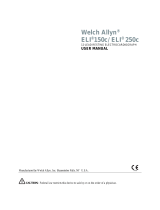 Wench Allyn ELI 150c/250c USER MANUAL ENGLISH User manual
Wench Allyn ELI 150c/250c USER MANUAL ENGLISH User manual
-
 Wench Allyn HScribe 6 Owner's manual
Wench Allyn HScribe 6 Owner's manual
-
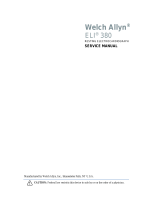 Welch Allyn 901133 User manual
Welch Allyn 901133 User manual
-
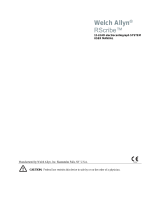 Welch Allyn RScribe User manual
Welch Allyn RScribe User manual
-
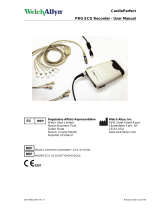 Welch Allyn PRO ECG Recorder User manual
Welch Allyn PRO ECG Recorder User manual
-
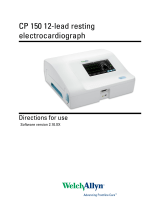 Welch Allyn CP 150 Directions For Use Manual
Welch Allyn CP 150 Directions For Use Manual
-
 Welch Allyn CP 50 Plus Directions For Use Manual
Welch Allyn CP 50 Plus Directions For Use Manual
-
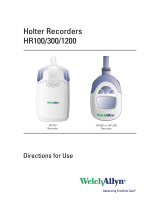 Welch Allyn HR1200 Directions For Use Manual
Welch Allyn HR1200 Directions For Use Manual
-
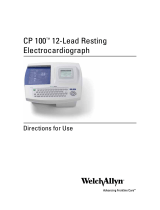 Welch Allyn CP 100 Directions For Use Manual
Welch Allyn CP 100 Directions For Use Manual
-
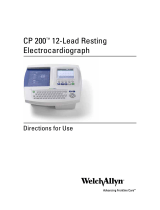 Welch Allyn CP 200 Directions For Use Manual
Welch Allyn CP 200 Directions For Use Manual













































































































